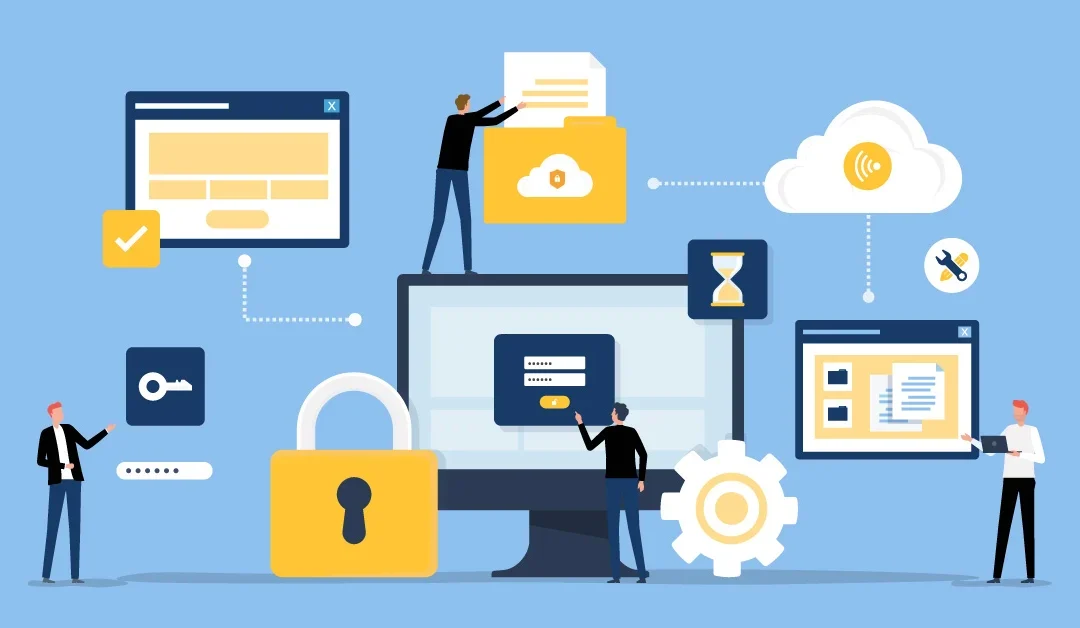The way we work is changing faster than ever. If you’re running a business in Central North Carolina, you’ve likely heard buzz about Microsoft’s AI Copilot. But between managing your day-to-day operations and keeping up with existing technology, you might wonder: Is this something your business needs to pay attention to?
What is Microsoft’s AI Copilot?
Think of Microsoft Copilot as your business’s new AI-powered assistant. It works seamlessly with the Microsoft tools you already use – like Outlook, Teams, and Word – to help your team work smarter, not harder. Instead of replacing your employees, it enhances their capabilities.
Key Features
Microsoft Copilot brings powerful capabilities to your everyday business tools. It intelligently processes and summarizes lengthy email threads, enabling you to quickly grasp key points and craft effective responses. Regarding presentations, Microsoft Copilot transforms your raw data into professional PowerPoint slides, saving hours of manual formatting. Microsoft Copilot is your personal data analyst for those wrestling with Excel, helping create complex formulas and uncover insights from your spreadsheets. Perhaps most impressively, it can generate document drafts by learning from your company’s existing content, maintaining your unique voice and style while accelerating the writing process.
Real Benefits for Local Businesses
Businesses implementing Microsoft Copilot are seeing remarkable improvements in their daily operations. Our clients report significant time savings on routine tasks, allowing their employees to work more efficiently. Often a considerable time sink, email management has become more streamlined with the intelligent assistance of Microsoft Copilot. Tasks that once took hours, like creating professional presentations, are now completed in a fraction of the time. This shift lets your team focus on what truly matters – strategic thinking, client relationships, and high-value work that drives your business forward.
Security: Your Top Priority is Ours, Too
We understand that security is a primary concern with any new technology. When integrating any new technology, it’s vital to ensure seamless integration with your existing firewall protection, providing a robust first line of defense. Multi-layer security protocols work in concert to protect your data at every point of access.
Making the Transition: Your Step-by-Step Guide
Your transition process begins with a thorough assessment phase. Start by evaluating your current Microsoft environment to understand your existing workflows and identify areas where Microsoft Copilot can provide the most value. During this phase, gather input from your team to identify specific use cases that align with your business goals and review your security requirements in detail.
A critical part of this assessment involves mapping out appropriate access levels for different roles within your organization. Consider which departments and individuals need access to specific data sets, for instance, ensuring that sensitive HR records or financial information are only accessible to authorized personnel. Each Copilot user should have customized permissions aligned with their specific role and responsibilities, protecting both sensitive company data and employee privacy.
Once your assessment is complete and you’ve established proper data access controls, move into implementation. This involves configuring security settings, installing necessary updates, and ensuring Microsoft Copilot integrates smoothly with your existing systems. Plan the rollout carefully to minimize any disruption to your daily operations during this process.
The final phase should focus on training and adoption. Schedule team workshops to ensure everyone feels confident using Microsoft Copilot’s features. Create best practice guidelines tailored to your business needs and establish a system for addressing questions or concerns that arise as your team becomes more familiar with the technology. Consider designating “Copilot champions” within your organization who can help support their colleagues during the transition.
Cost Considerations
Understanding the financial implications of new technology is crucial for informed business decisions. Start by reviewing Microsoft Copilot’s licensing options to find the tier that best aligns with your budget and business needs. Calculate potential return on investment by analyzing your current processes and identifying areas where Copilot could reduce time spent on routine tasks. Beyond the initial setup, regularly assess your usage patterns to maximize your investment and ensure you get the most value from every aspect of the platform. Consider tracking metrics like time saved, productivity improvements, and error reduction to measure the impact on your bottom line. Making the financial aspect of implementing Microsoft Copilot transparent will help you build a clear business case for your organization.
Ready to Transform Your Business?
As your local Microsoft Certified Partner, TCS can help answer questions you have about Microsoft Copilot. Contact us for a free consultation at 336.632.0860 or click here.




